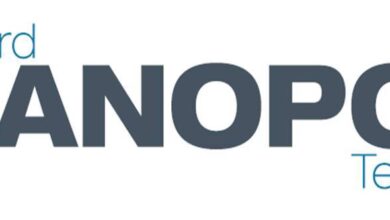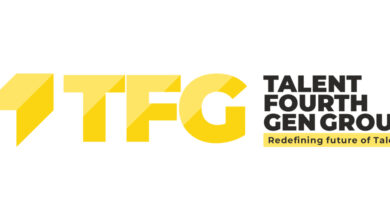Global Fetal Heart Rate Monitoring Device (2021 to 2026) – Growth, Trends, COVID-19 Impact and Forecasts – ResearchAndMarkets.com

DUBLIN–(BUSINESS WIRE)–The “Fetal Heart Rate Monitoring Device – Growth, Trends, COVID-19 Impact, and Forecasts (2021 – 2026)” report has been added to ResearchAndMarkets.com’s offering.
The Fetal Heart Rate Monitoring Device Market studied is expected to grow with an estimated CAGR of 6.70% over the forecast period.
Companies Mentioned
- Clinical Ink Inc.
- Laboratory Corporation of America Holdings (Covance, Inc.)
- ICON Plc.
- IQVIA Inc.
- LEO Innovation Lab.
- Medable Inc.
- Dassault Systemes SE (Medidata Solutions, Inc.)
- Medpace Holdings Inc.
- Oracle Corporation
- Parexel International Corporation
- Signant Health
Key Market Trends
Wireless Fetal Heart Rate Monitoring Devices Segment is Expected to Dominate the Market Over the Forecast Period
Wireless fetal heart rate monitoring devices are advanced diagnostic technology used to monitor the fetal heart rate to assure the fetus’s health during high-risk pregnancies. The wireless fetal monitors come with either adhesive pads or patches or with the belt to ensure proper holding across the stomach of the mother. This new technology could be used for any method invasive or noninvasive without compromising the result in inpatient or outpatient settings.
Many technologically advanced medical device organizations are planning to launch such devices or be on the verge of launching them. These wireless or cableless monitoring devices have made prenatal care a better experience especially in developing countries where there is a shortage of obstetricians and gynecologists. Also, the use of a wireless fetal monitor that can transmit fetal heart rate data via Bluetooth, was piloted amongst healthy patients undergoing labor induction at term and allowed home monitoring for 24 hours. The use of wireless fetal monitoring technology in the home could be found feasible and acceptable to pregnant women. The instrument like HeraBEAT (smart fetal doppler with data sharing) by H-cube (Her Healthcare at home) enables the expected mother to hear and monitor the fetus’s heart rate and share it with health practitioners. Thus, with the support of technologically advanced solutions for providing better prenatal care, the demand for wireless fetal heart rate monitoring devices is expected to grow in the future.
North America Dominates the Market and Expected to do Same in the Forecast Period
North America along with the United States and Canada, is found to have one of the very well-structured, developed, and advanced healthcare systems across the globe. With high research and development expenditure for fetal and neonatal care devices, the governments of the North American region are also promoting small setups for healthcare research. Therefore, many companies are encouraged to operate in this region, making North America dominating the market across the globe.
Moreover, According to the National Center for Science and Engineering Statistics (NCSES) report, the spending on Research and Development in the United States in healthcare has increased to 5.7% from 2018 to 2019. Also, the Canadian Government has launched about 73 projects under the Maternal, Newborn, and Child Health (MNCH) initiative aiming to improve the health of women and children. Further, high-risk pregnancies occur in around 6-8% of pregnancies in the United States. Monitoring of heart rate and vital during such conditions become extremely important for practitioners to prevent deaths. Thus, to overcome such scenarios and provide better health facilities to mother and fetus, the government is encouraging the participation by the various organization of industry and making the North American Market preferable choice by the industry players.
Key Topics Covered:
1 INTRODUCTION
2 RESEARCH METHODOLOGY
3 EXECUTIVE SUMMARY
4 MARKET DYNAMICS
4.1 Market Overview
4.2 Market Drivers
4.2.1 Technological Advancement in Fetal Monitoring Devices
4.2.2 Rising Number of Birth Rate and Preterm Births
4.2.3 Rising Government and Non Government Initiaves to Provide Better Maternal and Fetal Care
4.3 Market Restraints
4.3.1 Strigent Regulatory Norms for Medical Devices
4.3.2 High Cost Associated with Fetal Heart Rate Monitoring Devices
4.4 Porter’s Five Force Analysis
5 MARKET SEGMENTATION
5.1 By Product Class
5.2 By Technology Type
5.3 By Portablity of Device
5.4 By Geography
6 COMPETITIVE LANDSCAPE
6.1 Company Profiles
7 MARKET OPPORTUNITIES AND FUTURE TRENDS
For more information about this report visit https://www.researchandmarkets.com/r/53j0nz
Contacts
ResearchAndMarkets.com
Laura Wood, Senior Press Manager
[email protected]
For E.S.T Office Hours Call 1-917-300-0470
For U.S./CAN Toll Free Call 1-800-526-8630
For GMT Office Hours Call +353-1-416-8900




